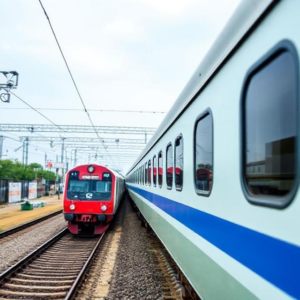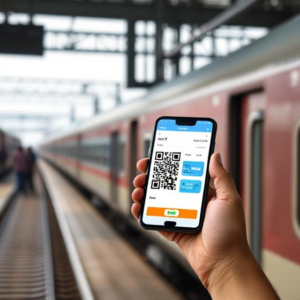Indian Railways in the Age of Automation
Automation is changing the way trains operate in India. With the help of new technologies and intelligent systems, Indian Railways is becoming more efficient, safer, and faster. Let’s break it down in simple terms:

1. How Automation is Transforming Railway Operations:
- Automated Ticketing and Entry: In some stations, automation has made ticketing and entry gates more efficient. Instead of manually checking tickets, passengers can use QR codes or biometric systems (like facial recognition) to pass through gates. This makes the whole process faster and more convenient.
- Track and Train Monitoring: Automation helps keep track of train movements more accurately. Sensors placed on tracks or inside trains can monitor things like train speed, engine health, and track conditions. If something goes wrong, the system can alert control centers so that quick action can be taken, reducing delays and improving safety.
- Automated Maintenance: Automation also plays a role in maintaining trains and tracks. Using drones and robots, Indian Railways can inspect tracks, bridges, and stations without needing human workers to physically check every part. This makes the maintenance process quicker and safer.
- Smart Stations: Automation helps in managing crowd control and train schedules at stations. For example, AI can analyze crowd movement in real-time and adjust things like platform allocation or train arrival timings to avoid overcrowding, making stations more efficient and passenger-friendly.
2. Future of Self-Driving Trains and AI-Based Signaling:
- Self-Driving Trains: In the future, self-driving trains might become a reality for Indian Railways. These trains would be controlled by AI systems that can handle the driving, stopping, and accelerating of the train. The benefit is that these systems would be able to respond faster to changes in the track or train condition, making the trains safer and more efficient. It would also reduce human errors, which are one of the leading causes of accidents.
- AI-Based Signaling Systems: Signaling systems are like the traffic lights for trains. They tell the train when to stop or go. In the past, signaling systems were controlled manually, but with AI-based signaling, these systems can automatically adjust based on real-time data. AI can analyze train schedules, weather conditions, and track availability to make sure trains run on time and avoid collisions or delays. For example, if a train is delayed, the AI system can automatically adjust the schedules of other trains to avoid overcrowding or accidents.
- Improved Safety and Efficiency: With AI and automation, Indian Railways can predict problems before they happen. If there’s a signal failure or a track issue, the system can identify it early and take action. This means fewer accidents and faster recovery when something goes wrong. AI can also optimize the speed and timing of trains, helping to reduce fuel consumption and increase the overall efficiency of the railway network.
In Summary:
Automation is making Indian Railways more efficient, safe, and modern. From automated ticketing and maintenance to self-driving trains and AI-based signaling, automation helps improve train operations. In the future, we could see more self-driving trains and smarter signaling systems that make the railways even better, reducing delays and accidents while making travel faster and more convenient for passengers.
Keywords: Indian Railway, Railway










